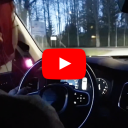Fatigued drivers show slower visual processing, loss of selective attention, poor distractor inhibition, reduced peripheral processing capacity as well as lapses and wake state instability. This leads to worsened decision making, slower reaction times, reduced attention to the forward roadway and driving performance incapability. Fatigue related crashes typically occur during night-time or in the early morning hours, after too many uninterrupted hours behind the wheel, or after extended periods of high or low workload. In this paper, fatigue is defined as the biological drive for recuperative rest, with sleepiness as a special case referring to accumulated sleep debt, prolonged wakefulness, or troughs in the circadian rhythm.
The purpose of the present study was to compare the effects of manual versus level 2 partially automated driving on subjective and objective indicators of sleepiness. This was done by comparing the development of driver sleepiness while driving on a motorway with real traffic during both daytime (full sleep) and night-time (sleep deprived). The hypothesis was that partially automated driving will lead to higher levels of fatigue due to underload.
Conclusion
Driving with partial automation leads to higher levels of sleepiness, especially during night-time driving when the sleep pressure is high. During daytime, when the drivers in the study were alert, partially automated driving had little or no detrimental effects on driver fatigue. This may have an impact on evaluation and enforcement of driver monitoring regulations/assessments such as UNECE GSR 2022 and Euro NCAP 2024.
This WP1-paper was written by Christer Ahlström, Raimondas Zemblys, Herman Jansson, Christian Forsberg, Johan Karlsson and Anna Anund.
Read the whole paper here »



